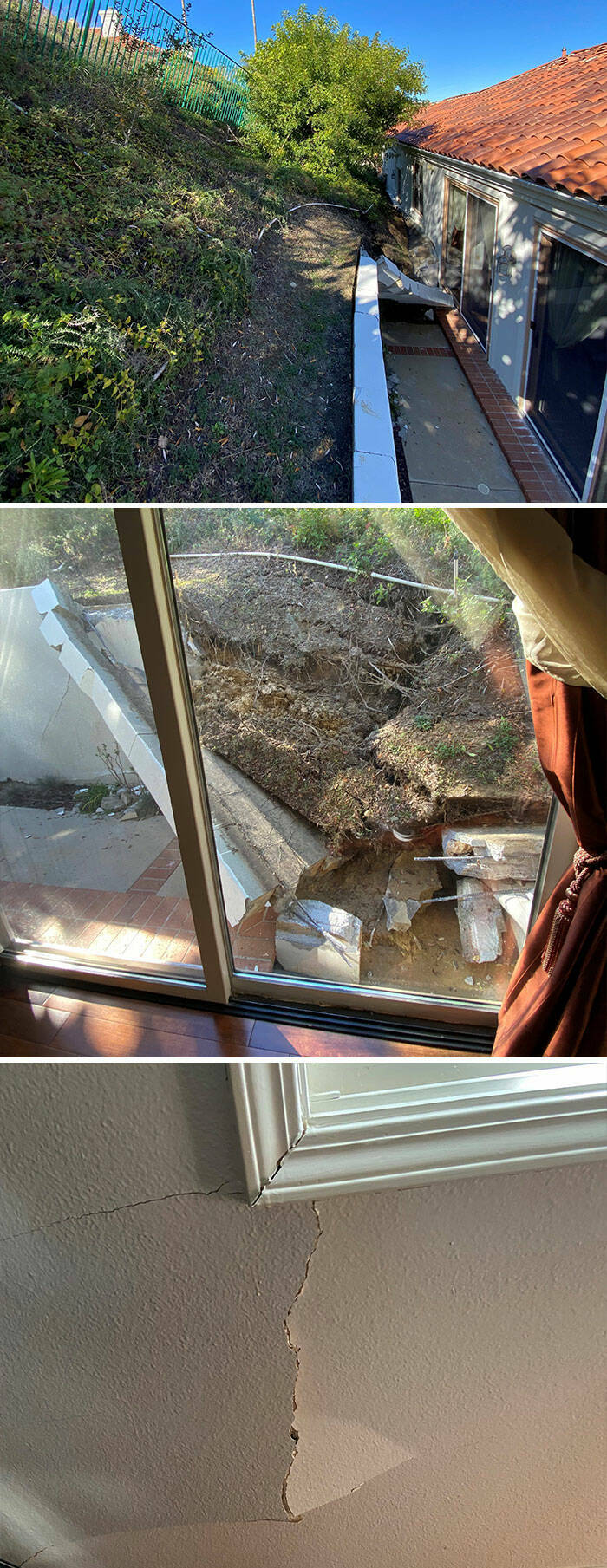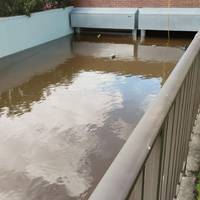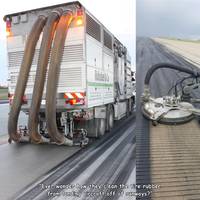
"The soil eroded and left a massive gap in the hill as it all came sliding down. All the extra weight causes the wall to get to a point that it is not strong enough to support the soil, it becomes overloaded, and fails.
A drainage system behind a wall like this could’ve potentially helped.
A drainage system can include a layer of gravel, drainpipes and weep holes that redirect the water that would usually sit behind the wall.
Retaining walls typically are not designed to resist the weight of soil and water. So, when hydrostatic pressure builds up behind a wall, it can become overloaded and fail.
The wall caused damage inside the home too.
This could’ve been much worse."







only a slight twitch?
Dem Ingeniör ist nichts zu schwör.
I realize that's it's unlikely to collapse right that second but I still wouldn't stand that close to a masonry wall with that much of a lean...